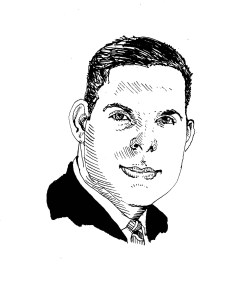The story is unnervingly familiar. An encouraging start to the year, captured in rising confidence and improving job numbers, later cedes a measure of recovery to shifting headwinds at home and from abroad. Threatening to revisit the false starts of the last two years, the American economy is losing momentum once again. This time around, the risks for commercial real estate investors are more pressing. Buoyed by historically low-cost credit and an enthusiastic response to the winter data, current investment trends assume a stronger outlook than what’s unfolding in the space market’s demand-side drivers.

Nearly three years after the recession reached its official conclusion, last Friday’s employment report underscored the still-fragile state of the U.S. economic recovery. Private businesses created just 82,000 net new jobs during May, the weakest result since last August and an unambiguous disappointment following the first quarter’s brisker pace of hiring. Healthcare and education accounted for more than half of May’s job tally. Office-using employment was flat, while the construction industry busied itself jettisoning workers.
Faced with a potential repeat of prior years’ downside inflections, stock markets last week erased their gains for 2012. By the market’s close, the yield on 10-year treasuries had fallen below 1.5 percent, setting a new all-time low in the face of renewed convulsions in the eurozone. For all the wrong reasons, the 30-year fixed-mortgage rate set a new low for the fifth consecutive week. The upside of rock-bottom mortgage rates is limited. If we dare scratch beneath a surface analysis, it is apparent that the response to falling rates has been inelastic. Apart from the user cost of ownership calculus, lackluster housing market trends reflect the difficulty that potential homeowners face in securing financing.
The jobs report was hardly alone in triggering the flight to safety that has pushed rates lower. Heightened anxieties reflect the dimmer picture emerging from a range of data points. Last Thursday’s GDP report showed the economy expanding at an annualized rate of 1.9 percent in the first quarter, down from an earlier estimate of 2.2 percent. Even though its production gauges pointed to modest growth, the Dallas Fed’s business activity index reported a negative result for the nation’s employment breadbasket. A report from the Bureau of Economic Analysis showed that personal income growth slowed in April. Consumption picked up from a month before but came at the expense of a lower savings rate. On the positive side, corporate profits in the first quarter increased by almost 15 percent year-over-year. Multifamily spending is higher, as well, lifting overall construction spending.
The recovery’s fits and starts require a sober view of both improving trends and disappointing setbacks. Confidence intervals remain wide, subject to the vagaries of forces outside market control. If a durable resolution to the European crisis—or a more sensible approach to policymaking at home—triggers a sharp rebound in confidence, a return to hiring could be in the offing. Atop the wish list, leaders in the House and Senate could broker an early compromise on the fiscal cliff, removing a major source of uncertainty and stumbling block for investment.
These exercises in naïve thinking can be instructive. Commercial real estate investors who take a jaundiced view of the political apparatus should be careful when assuming that their acquisitions can decouple from underlying economics and the conditions that are dragging on growth. To a greater extent than a year ago, expectations of buoyant fundamentals suffuse bidding for today’s most coveted assets. But there is only so long that valuations can outpace their foundations. If economic and labor market conditions do not improve in the coming months, we may find we have tested that limit.
dsc@chandan.com
Sam Chandan, PhD, is president and chief economist of Chandan Economics and an adjunct professor at the Wharton School.


